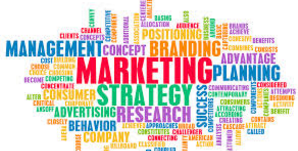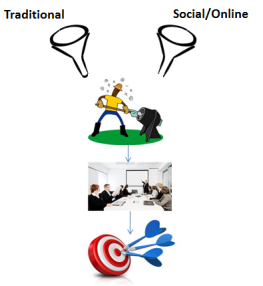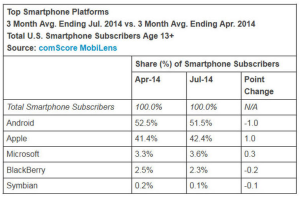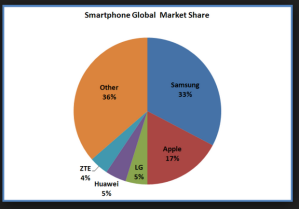 It’s that time again when just about everyone has predictions for the New Year. In November, Forbes contributor Kimberly Whitler posted predictions from the C-suite. Adam Davidi, from the Guardian, posted predictions on branding based on conversations with “experts.” I am sure we will see predictions from Forrester, Gartner and others as well.
It’s that time again when just about everyone has predictions for the New Year. In November, Forbes contributor Kimberly Whitler posted predictions from the C-suite. Adam Davidi, from the Guardian, posted predictions on branding based on conversations with “experts.” I am sure we will see predictions from Forrester, Gartner and others as well.
As a Managing Director at C-Level Partners, I don’t want us to be left out. My colleague, Vince Ferraro, and I have been C-level executives in marketing and general management for many years. We now consult with companies on marketing and their go-to-market strategies. We decided to look at “Big M” marketing, relating to predictions for how companies and brands go to market and how they interact with customers. So without fanfare and any biased perspective, we share these predictions for Marketing for 2016.
Let me be candid. While most of these are predictions based on our work with clients, with start-ups and in talking with our marketing colleagues, there are also some “aspirational trends” that we hope come true for the profession as well as we believe they are important for marketing professionals and the businesses they manage. Some of these trends overlap and leverage each other. To us, that will represent the power of good marketing. In no particular order, our top sweet 16 are:
- Cognitive Commerce has begun. Marketers will use information on customers from their databases, the internet, and other sources to build stronger relationships, build predictive algorithms, personalize content, and deliver products and services to meet their specific needs.
- The distinction between offline and online will disappear as real time analytics will unite both camps. Marketers will consider all (omni) marketing channels to optimize their marketing programs based on cost, effectiveness, ROI and the satisfaction quotient from building relationships with customers.
- Branding will be from the inside out. Companies will not push the brand but the brand will be built on trust, engagement, referrals, authentic dialog, and transparency.
- Digital Marketing will cease to exist as a standalone part of marketing. There isn’t a need for separation anymore. World class marketers will know how to market in a digital world. Traditional and online marketing not only will coexist, but one will leverage the other and work better together.
- Advances in video broadcasting and continued growth in mobile devices will change TV marketing forever. Marketers will use new technologies to enable a more immersive experience and TV and other broadcast video usage will expand on all screens – laptops, desktops, tablets, smartphones, HDTVs and even screens in cars,( i.e. telematics).
- Content will be created specifically with video channels in mind. Further, there will continue to be a migration to mobile video which will become de rigor on a company’s website, in blogs, in training, and on Youtube. Youtube channels for marketers will continue to expand. In addition, the use of video podcasting and live streaming are also in a growth mode. The world is clearly digital and going video and marketers will take advantage of that.
- Personalization will grow as its ROI is measured and as customers come to expect to be treated as individuals. We, at C-Level Partners, have written that there are now 7Ps of marketing and personalization is one of them. Technology and marketing automation will enable this to happen. This personalization will improve company branding and the ability to build stronger relationships with customers.
- Marketers will get back to basics. Solid, well planned marketing will trump the sexy marketing in the past. The CMO and business leaders will focus on marketing as a strategic investment to generate profitable revenue.
- The human touch will return to marketing. How many of you love to listen to an automated customer service system saying that “your call is important to us…” That’s bull! Companies will realize that you are important and will show it by having more touch than tech or at least do a better job of integrating the two. Being human will also apply to helping customers understand the value of the company’s products and determining what motivates buying behavior. This is like getting back to the future… and I love it.
- Employee experience (EX) will be as important as customer experience (CX). Engaged employees are critical because at the front line – in retail, sales and customer service- they ARE the brand, or at least a fair representation of it. Engaged employees also feel part of the company, behave like owners, and will be promoters of the company’s products and services. According to our anecdotal evidence, only about 30% are engaged today. Think Zappos, Starbucks, 1and1, and Jet for companies who provide both good EX and CX.
- Marketing and Data Science will be the new dynamic duo. This will be key to understanding the customer persona from many angles – demographics, psychographics, sentiments, and buying behavior. Vince and I, both being engineers, can relate and understand this dynamic. We expect to see the CIO and CMO becoming BFF’s.
- As a corollary to #11, data will be the new currency for the younger generation. Data will enable the ability to personalize the marketing message and make that message more meaningful and differentiated for a particular customer. But it doesn’t only apply to the younger generation; big data will be used to help understand buying behavior of all customers and couple that information with the dynamics of profitable revenue growth for the corporation. The new marketer will be, must be, a datahead or recruit the right people in his/her organization who have the skills to analyze the myriad of data available from business and marketing systems.
- Marketers will provide more original insights into business. Marketers will not be mere curators of data and content. The key word is By having more insight into business, the CMO will be able to justify his/her seat at the executive table. (This is a belief and expectation!)
- Customer success will be determined by a combination of satisfaction, retention, and referral. We have always believed that the combination of the three components will yield the most loyal customers. In conjunction with this, customers themselves, through social media, will become the company’s best sales people. Technology to help build customer engagement will continue to evolve and become more sophisticated.
- Marketing and selling will be in an omni-channel world. Marketing execs will understand the buying persona of their customers and will use math and analytics to optimize the sales and distribution channels. But the key here is that it will not be one channel vs. the other. The marketer will blend online and offline, retail and wholesale, third party distribution and direct to ensure the buying experience matches the customer and to improve the profitability of the company.
- Chief Marketing Officers will evolve to become strategic businesspeople first and “marketing” executives second. This is our wish and expectation; therefore, we took the liberty to include it as one of our predictions. The CMO will be the linking pin from the outside world of the customer to the inside world of production, manufacturing and operations. He/she will have a unique view on building and capturing valued. In the past, we have not seen this from most of our traditional marketing colleagues as many have been focused on one area e.g. advertising, digital, brand, and product. The new marketing executive will be a generalist, a businessperson with a focus on top and bottom line growth, steeped in data analytics, change management, and growth levers, coupled with creative and innovative bent. We may be wrong about this one for 2016, but we believe it will eventually take root over time.
We would be interested in hearing your thoughts on your sweet 16 predictions for 2016. Let’s keep the dialog going at www.clevelpartners.net. And feel free to contact me at dfriedman@clevelpartners.net or Vince at vferraro@clevelpartners.net for a complimentary discussion on how we can help you achieve value creation and profitable revenue growth.
 I was reading an
I was reading an  Marketing has changed and will continue to evolve over the next several years. Clearly there will be a natural bonding between the CIO and CMO as marketing technology has become more important in defining the marketing mix. While Ms. Whitler did not ask my prediction for 2016, I will share it with my readers. I predict that marketing will be more about the customer and the great marketer will find the right combination of the 7 elements to build and sustain relationships with that customer. At least I hope so.
Marketing has changed and will continue to evolve over the next several years. Clearly there will be a natural bonding between the CIO and CMO as marketing technology has become more important in defining the marketing mix. While Ms. Whitler did not ask my prediction for 2016, I will share it with my readers. I predict that marketing will be more about the customer and the great marketer will find the right combination of the 7 elements to build and sustain relationships with that customer. At least I hope so.




Recent Comments